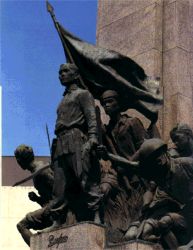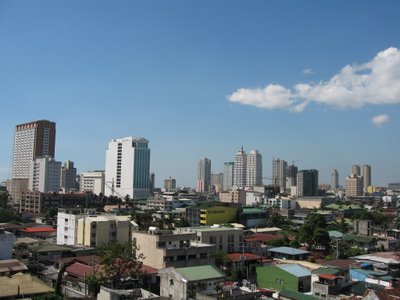
New Year's Eve in the Philippines is a time to reunite with long lost family, ingest copious amounts of local gastronomical delicacies (isaw and sisig to start), imbibe cases of San Miguel beer, and, most importantly, ignite arsenals of large, possibly unstable fireworks that resemble mini-TNT and are just as impressive for their sonic booms as they are for their flourishes of light and ability to set off car alarms.

Every year, in the name of scaring off evil spirits, the Philippines becomes a merry warzone of colorful explosions, rapid fire bottle rockets, and larger than life roman candles that light up the night sky for a brilliant few seconds before leaving a hazy sulfuric trail that wisps away into the wind.
When all is said and done, the streets are littered with frayed, burnt firework wrappings, the sky is a hazy grey, and hospitals are attending to the sudden increase in hand-related burns and missing fingers.
In other words, there is nothing quite like New Year's Eve in the Philippines!
Without further ado, I present to you the actual warning list mailed out to attendees of a New Year's Eve street party in Makati City, the Philippines' version of Manhattan. This is the actual text undoctored for your viewing pleasure.
Have a happy and safe holiday and be glad that restrictions on fireworks exist in the United States!
MAKATI CITY'S YEAR-END STREET PARTY
Security & Safety Reminders:
1) Pants and long sleeve tops (shirts/sweaters/jackets) and flat heels would be protective.

2) For ladies, a wide leather bag that could cover your head from falling debris would be useful. Keep it light. Hats could also be useful. Falling debris from fireworks (Kwetis) and/or bullet slugs from indiscriminately fired weapons nearby would be most possible from the approach of midnight to fifteen minutes past.
3) Leave valuables and important documents at home.
4) In the event of an explosion from any source occurs, duck and cover your head. Under the table, if available, would be nice. Don't raise your head until blown debris has come crashing down. Possible stampede could ensue following an explosion or the threat of a bomb. Remain calm and don't be the first to start the motion stage. Listen to instructions from the authorities. If people have started to move, try to move perpendicularly or diagonally with the direction of motion and try to seek refuge in a corner or an abutment of a building and let the onrush of bodies pass you by. If you are in the middle of a moving mass, the worst thing that could happen is for you to loss your balance and fall down.

5) Thrill seekers may use tear gas and other malodorous substances (human refuse even). A wet hankie to cover your eyes and nose would be useful. If you could smell it you are downwind of the source. Try to relocate upwind until the smell is contained or has passed.

6) There will be first aid booths and paramedics around to give aid in the event of sudden attacks of illness (nausea/dizziness/breathing difficulties/minor wounds). Ambulances for evacuation to nearest hospital will also be available.

7) Beware of pickpockets and 'salisi' operators. Call the attention of security personnel (MAPSA/Police) to unattended/left behind packages in your vicinity.

8) Park your vehicles in guarded carparks.

9) In the event of a possible bomb, the authorities will try to disperse people in a controlled manner. Head out away from the danger by listening to instructions from the authorities.
10) Anything that could be construed as a deadly weapon will be banned. Hard liquors may also be banned. Try to limit intake of alcoholic beverages (wine/beer). You might need a clear mind in the event of a major emergency.
Happy New Year!






















